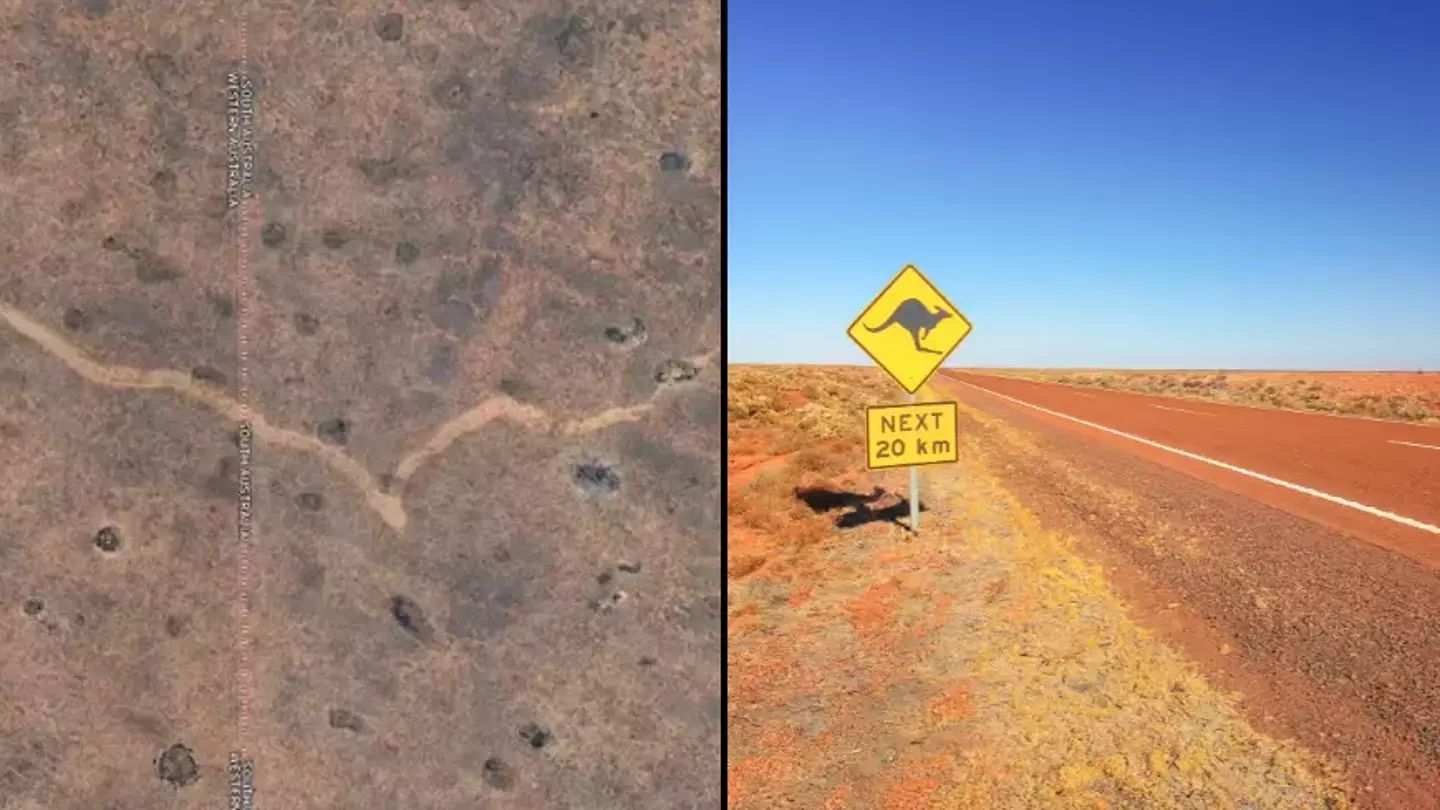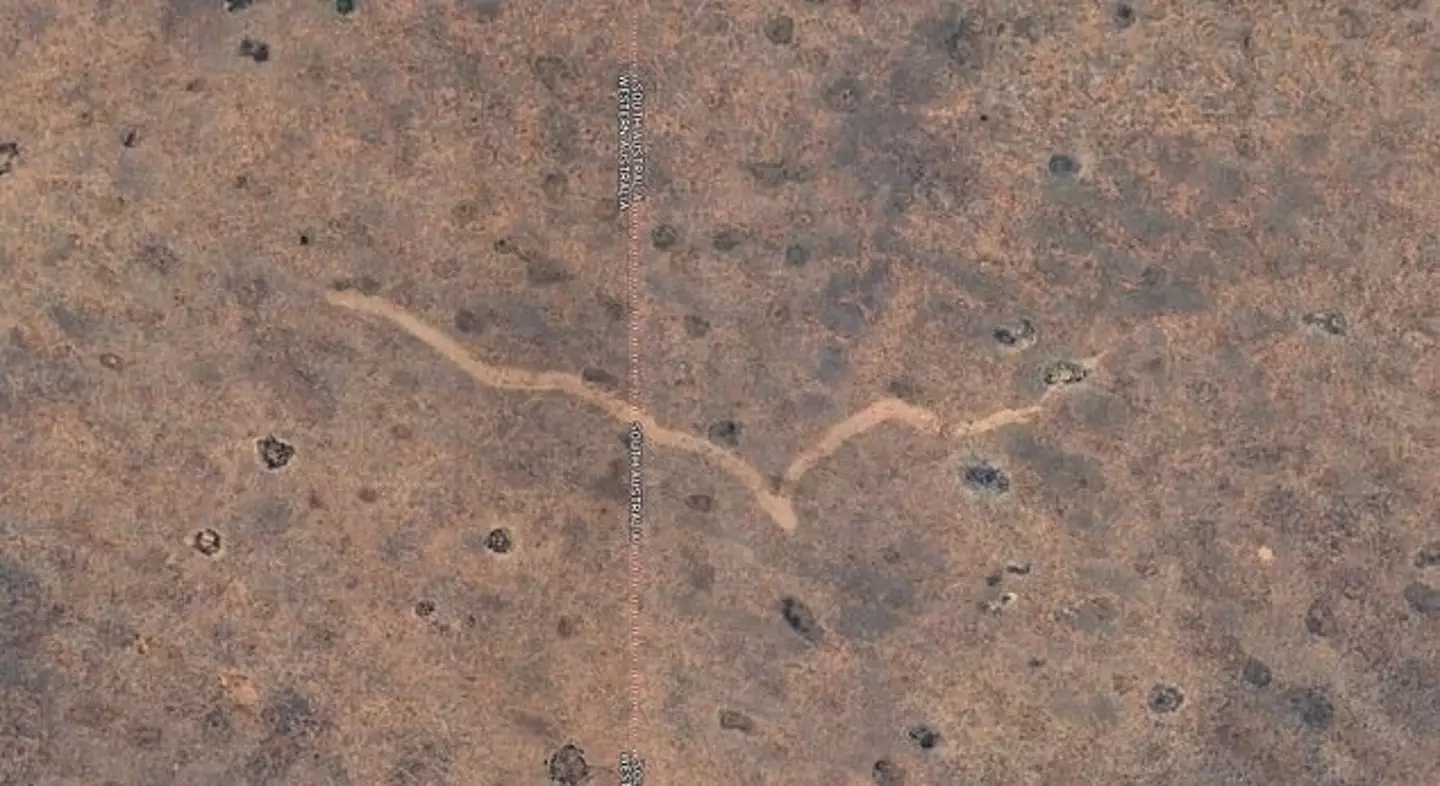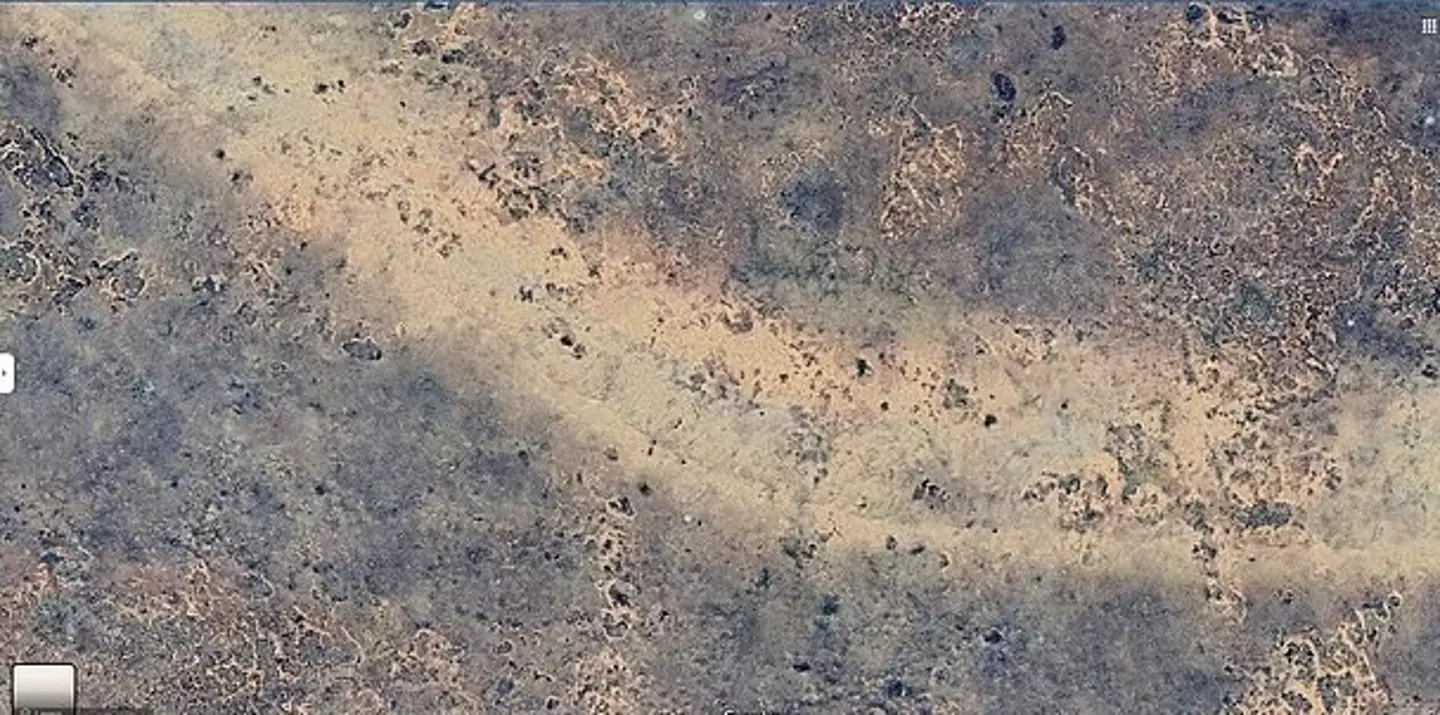
A man looking at Google Earth came across a shocking discovery in the Australian outback.
Earlier in the year, a caver was checking through satellite images of Nullarbor Plain, in southern Australia, and found a ‘mysterious scar’ drilled into the landscape.
Scientists were ‘intrigued’ by the find and what was possible ‘without the power of technology’.
Dr Matej Lipar, Adjunct Research Fellow in Curtin’s School of Earth and Planetary Sciences, said in a column for the Daily Mail that the ‘scar was created by a ferocious tornado that no-one knew had occurred’.

Satellite images of the Australian outback showed something very unexpected (Google)
Dr Lipar explained that the effects of the tornado is a ‘remarkable example of nature’s ferocity would have gone unnoticed’.
After comparing satellite imagery of the site over several years, the group determined that the tornado took place very recently, and occurred between 16 November and 18 November in 2022.
“It’s important for scientists to accurately predict tornadoes, so we can issue warnings to communities. That’s why the Nullarbor tornado scar was useful to study,” Dr Lipar added.
“The Nullarbor Plain is a remote, dry, treeless stretch of land in southern Australia.
“The man who discovered the scar had been using Google Earth satellite imagery to search the Nullabor for caves or other karst features.
“Karst is a landscape underlain by limestone featuring distinctive landforms.
“The discovery of the scar came to the attention of my colleagues and I through the collaborative network of researchers and explorers who study the Nullarbor karst.

Scientists were ‘intrigued’ by the find (Google)
“The scar stretches from Western Australia over the border to South Australia.
“It lies 20 kilometres north of the Trans-Australian Railway and 90 kilometres east-north-east of Forrest, a former railway settlement.”
Dr Lipar travelled to the site with a group of colleagues in May and found that the scar was 11 kilometres long and between 160 and 250 metres wide.
“It bears striking patterns called ‘cycloidal marks’, formed by tornado suction vortexes. This suggests the tornado was no ordinary storm but in the strong F2 or F3 category, spinning with destructive winds of more than 200 kilometres an hour,” Dr Lipar warned.
It’s estimated that the tornado latest ‘between seven and 13 minutes’ and that ‘features of the scar suggest the whirling wind within the tornado was moving in a clockwise direction’.
“Only three tornadoes have previously been documented on the Nullarbor Plain. This is likely because the area is remote with few eye-witnesses, and because the events do not damage properties and infrastructure,” the scholar concluded.
“Interestingly, those three tornadoes occurred in November, just like this one.”
Featured Image Credit: Google Earth/Getty Stock Images
Topics: Australia, Google Earth, Google Maps, Community, Environment


